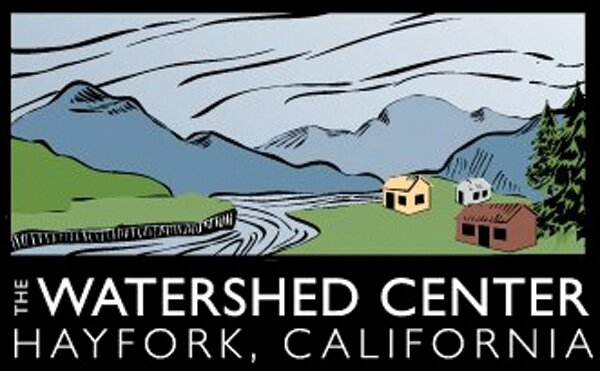2024 Snorkel Survey Results Inspire New Problem-Solving to Boost Salmon Population
We’re happy to report that our snorkel surveys in the South Fork Trinity River and Hayfork Creek have been safe and successful.
These aquatic efforts, which have been ongoing for 15 years, are made possible with extensive partnership, particularly with the Trinity County Resource Conservation District, Bureau of Reclamation, California Department of Fish and Wildlife, Hoopa Tribe, U.S. Department of Fish and Wildlife, U.S. Forest Service, the Yurok Tribe, numerous volunteers, and the landowners who grant us permission to access the waterways from their property. The fish population data we collect help guide our restoration techniques and inspire future projects.
Snorkel surveys are long, full days, requiring extensive stamina to navigate slippery, taxing terrain.
Our snorkelers work in groups of three while wearing snorkel and mask, neoprene wetsuits, hoods, gloves, and boots. They swim, wade, and scramble anywhere from 3 to over 6 river miles per survey stretch. Snorkel survey days can be anywhere from 6 to 12 hours long! Many stretches of water are remote and difficult to access, making well-planned logistics and strong teamwork essential to success.
We surveyed the South Fork Trinity River over the course of two days and Hayfork Creek for one full day. This year we observed:
2 adult Chinook salmon
2 Chinook Jacks
56 Steelhead
204 half-pound Steelhead
3,182 Klamath suckers
121 turtles
32 mussel beds, and
40 Pacific lamprey
Tens of thousands of salmon were estimated to be present in Trinity River prior to dam construction, and recent salmon observations have reached historic lows. Because salmonids begin their lives in freshwater, mature in the ocean, and then return to their natal stream to spawn, there are many factors at play across a large geographic range which challenge their survival. We know the oceans are growing warmer and more acidic, but there are also many as-yet unknown factors contributing to the salmonid population decline. Our resource management decisions are reached by utilizing direct observations from our local freshwater streams, allowing us to work with what we know to identify new potential project sites. If we are able to restore spawning and rearing habitat, we might help increase the salmonid population.
Despite low observed numbers for some species, the Aquatic team is looking forward to future in-stream restoration projects. The Watershed Stewardship program hopes to explore the concept of building remote site incubators (RSIs) in various locations within the South Fork Trinity River watershed. These RSIs will allow salmon to be reared in streams where spawning no longer occurs or is limited. The RSIs will build off-stream incubators, supplied by surplus salmon eggs from the local hatchery, and continuously monitor temperature and oxygen levels. The system will utilize gravity-fed stream water and the natural stream substrate composition to rear salmon. By doing so, the RSIs help the salmon imprint on the stream, leading them to return to the site and spawn the next generation of fish. This will be a cross-agency effort that will unfold over years and is currently in the planning stage as we seek out available funds and foster relationships. We will conduct surveys for redds, or salmon egg nests, during October and November. We can’t control what happens in the ocean, but there are strategies we can utilize locally to help our fish friends.
Josh Smith captured this footage during the July 30th, 2024 dive in a reach of South Fork Trinity River.
You can be a friend to the fish by keeping your property clean and free of pesticides, trash, etc., observing the stream forbearance period (the hot summer months when stream flows are at their lowest), leaving water instream, and avoiding salmon redds when wading through water during the autumn months. We have an ongoing water tank installation project unfolding, offering 35,000 gallons of water storage to residents dependent upon surface water for domestic use and living within specific watersheds. Email lesli@thewatershedcenter.com if you live on Browns or Tule Creek, or to inquire about feasibility for future projects within your watershed.
Together we can take steps to improve aquatic habitat for all of the wildlife that make the mountain streams their home!


